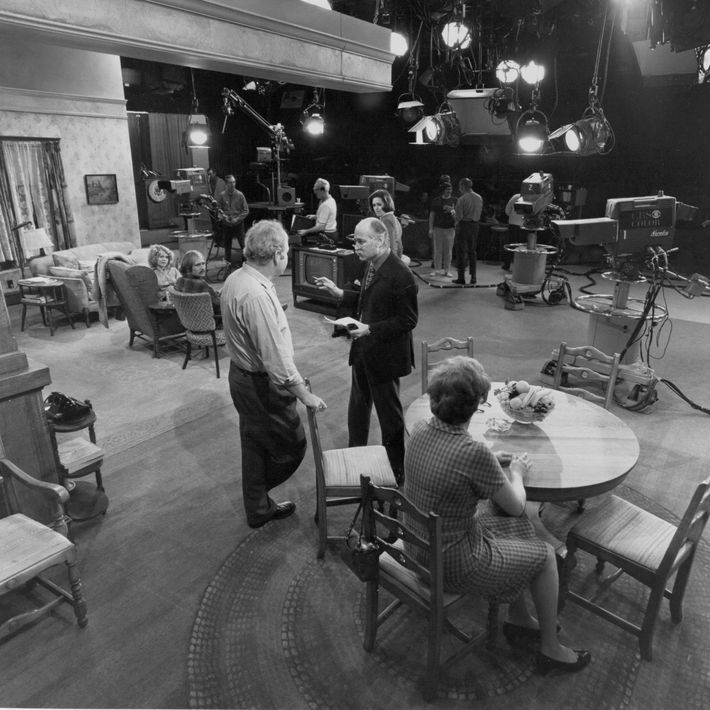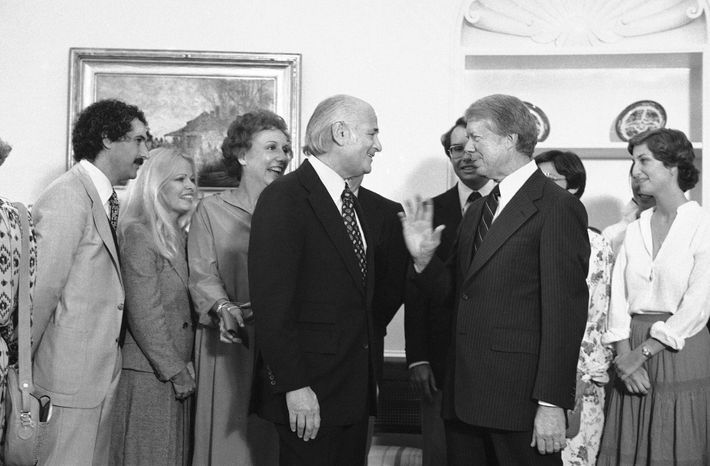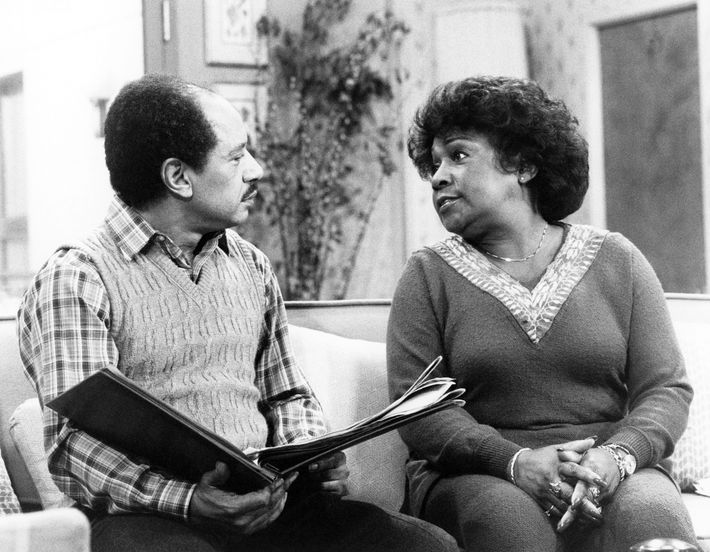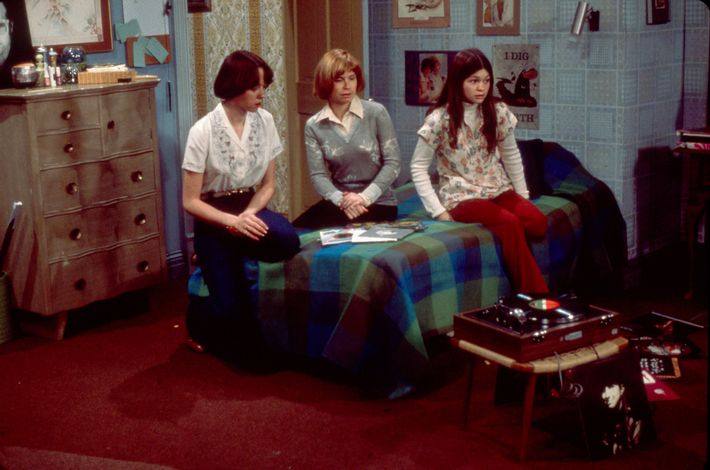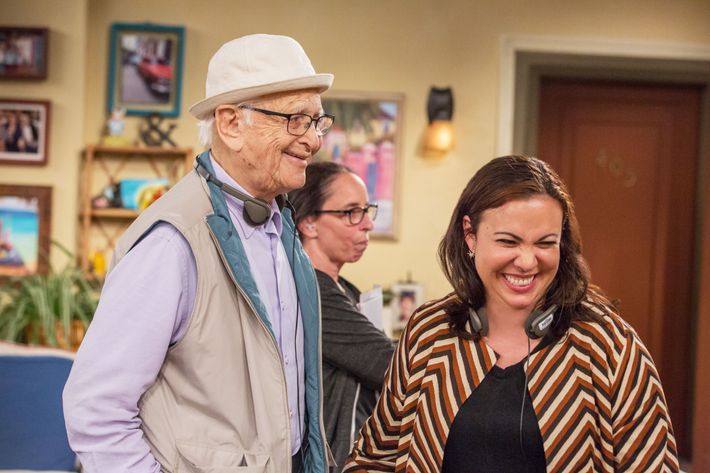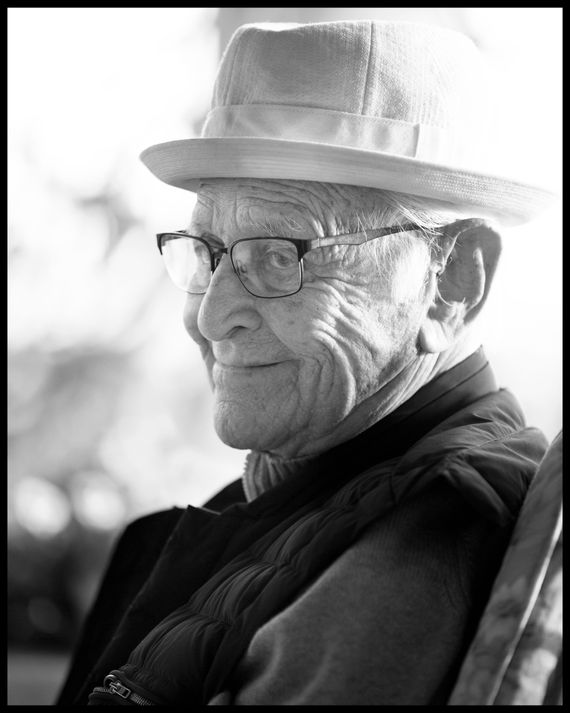
This article was featured in One Great Story, New York’s reading recommendation newsletter. Sign up here to get it nightly.
The idea of television as a democratizing, unifying, pervasive force in American life has always been an incomplete story, but it’s a persuasive one. For much of the 20th century, television was an incredible combination of accessibility and restriction: millions of households with TVs, nearly all watching the same three networks. It is the closest thing America has ever had to a shared national storyline — not just the fiction of the default happy white American TV household but television that made viewers aware that they were watching themselves, watching a complicated, capacious idea of what this country was and could be. That understanding of television, our modern concept of TV as a mirror but also as a cultural force in American life, was created by Norman Lear.
When Lear — who died on Tuesday, December 5, at 101 — came to TV in the 1950s after serving as a radio operator on B-17 bombers during World War II, he wrote comedy sketches for Jerry Lewis and the Colgate Comedy Hour. He soon transitioned to making sitcoms, where TV and American identity had already begun to solidify in relationship with one another: the American family and their comfortable, humorous lives; domesticity as the root of American society; masculinity as American individualism, defined as riflemen and detectives.
“For twenty years — until All in the Family came along — TV comedy was telling us there was no hunger in America, we had no racial discrimination, there was no unemployment or inflation, no war, no drugs, and the citizenry was happy with whomever happened to be in the White House,” Lear wrote in his memoir. “Tell me that expressed no point of view!”
Lear’s first show, All in the Family, was technically an adaptation of a British series called Till Death Us Do Part, a series about a bigoted father and his perpetual battles with his liberal son. Lear hadn’t even seen the original; he read a description of it in TV Guide. But he was immediately reminded of his own relationship with his father. Lear’s family was Jewish, and his father was a fraudster as well as a racist, but his TV concept translated Lear’s background into a family of white, mostly law-abiding Protestants. It would be a sitcom about two married couples — father and mother, daughter and son-in-law — living in the same home, deeply divided about every imaginable political and cultural topic. Archie Bunker’s racism and misogyny, Edith’s long-suffering parochialism, Mike and Gloria’s hippie progressivism: All of it was a constant clash, none of it buried or waved away in the space of an act break or laugh line.
All in the Family, which aired its first episode in January 1971, employed the same format and tropes of shows like Father Knows Best, The Adventures of Ozzie and Harriet, and Leave It to Beaver, TV series that used the all-knowing father, the submissive mother, and the cheerful home to reinforce white American paternalism. The Bunkers’ sitcom house, the physical structure of it, is so familiar: the living room with the frumpy easy chairs; the stairs leading up to the bedrooms; the kitchen where a wife should be standing in an apron, smiling cheerfully. In the pilot of All in the Family, Mike and Gloria have set out an anniversary brunch for Edith and Archie, and we the viewers wait for this lovely surprise to kick in once the parents walk in the door. Instead, it’s a brawl. Within moments, Mike and Archie get into it over race and economics and the American dream. “You’re going to tell me that the Black man has had the same opportunity as you?” Mike asks Archie. “More, he’s had more!” Archie rejoins. “I didn’t have no million people marching out there to get me my job.” “No,” Edith leans over from the dining table, trying to be helpful. “His uncle got it for him!” Lear’s insistence on putting race at the center of his work would eventually lead to producing Sanford and Son, Good Times, and The Jeffersons, each watershed series for their depictions of Black families on TV.
Everything — everything — roiling under the surface of the gentle, hopeful American sitcom explodes onto the screen in those first 25 minutes of All in the Family. Bone-deep anxiety about money, resentment and frustration over class and education, nostalgia for an earlier moment in American life that never existed, loss of religious faith, racial prejudice, sexual freedom, optimism and fatalism, all of it comes spilling out as these four people are just trying to have one nice Sunday brunch. What looked like the monoculture of American life in 1960, distilled down into the pristine clarity of the domestic TV situational comedy, is instantly remade into a portrait of irreconcilable divisions. The patriarch who should be a loving, wise guide is actually a buffoon. The respectful son-in-law has become furiously rebellious; the daughter is frantic; the placid, competent mother is now clueless. At the start, those exterior shots of the house at 704 Hauser Street seem so anodyne. Everything looks calm from the outside, a uniform line of Astoria houses, filled with uniformly happy American families. This is the lie TV has let us tell ourselves, those credits say. What a joke!
And yet the vision of American life in Norman Lear’s television is not pessimistic. There are dark moments, absolutely, but there’s so much tenderness too. Mike bemoans the fact that he and Gloria are stuck living with her parents for years while he gets a college degree, but Archie and Edith love their daughter, and even though Archie is regularly furious with Mike, he seems to sometimes enjoy Mike’s company. It’s like this throughout Lear’s work. Inside the incredible stretch of successes that included Maude and One Day at a Time, Lear also created the short-lived sitcom Hot l Baltimore, which followed the long-term residents of a crummy hotel with a burned-out letter “e” on the sign, and added sex workers, illegal immigrants, and one of television’s first gay couples to the list of citizens in Lear’s portraits of America. His love for all his characters is palpable across the board, even in the wry, almost surrealist bent of his soap-opera send-up Mary Hartman, Mary Hartman. Lear’s shows treat his characters with great warmth and generosity, even when it’s the generosity of portraying their flaws without shying away.
The monoculture of television before Norman Lear could never have held for long. Its whiteness, straightness, and patriarchal rigidity had already begun to drift far afield from the energy of young America in the 1960s; by the time All in the Family premiered, shows like Leave It to Beaver already felt like cultural relics. What Lear’s work created, though, was not a simple new cookie-cutter model for what the default TV family should look like (the happy, comfortable American household, now with some hippies!). The totality of his work insists that there is no such thing as a default; Lear’s production of not one but multiple sitcoms featuring Black families, all of them with different backgrounds, economic statuses, and interpersonal dynamics, was a radical insistence that Americans should not make simplistic assumptions about life behind their neighbors’ closed doors. It was a model for putting an argument, a sustained, angry, deeply felt but respectful fight, at the center of American life.
It’s odd to think of argument as a form of monoculture, but for a moment on television in the 1970s, it was. This was Lear’s gift, his remarkable ability to embrace a conflict without abandoning a fundamental optimism about what that conflict could create. In Lear’s conception of culture and democracy, the fight was the thing we shared. His vision, translated into the crystalline precision of a tight 25-minute comedy and then viewed by as many as 60 million people, presented the universal American experience as a quarrel. People living together and fighting and still coming out the other side as a family.
Lear’s vision of American culture could not last, certainly not at the incredible level of viewership that it once had. He continued to produce through the ’80s and ’90s, and returned to TV in the streaming era with a beloved reboot of One Day at a Time, but too much about the economics and technology of TV had changed for it to have the same broad impact. There could be no shared culture of the great American argument today; TV has become too reflective of the great internal American estrangement, a country full of Archies and Mikes who never have to watch each other’s shows.
Nevertheless, Lear’s work shifted how we see television’s role in American lives, and that fundamental awareness — TV as a mirror of society, reflecting us but also showing us things we had not already seen — is still with us now. Paddy Chayefsky said of Lear’s work that he “took television away from dopey wives and dumb fathers, from the pimps, hookers, private eyes, junkies, cowboys, and rustlers that constituted television chaos and, in their place, put the American people. He took the audience and he put them on the set.” In Lear’s memoir, he admits it has taken him time to acknowledge it, but that he thinks Chayefsky was right. “My view is that we made comedy safe for reality,” Lear wrote. “I was angry at the lunacy that I saw in the world. But for me there was always infinitely more love. I think the shows loved people, and that’s why they tried to deal so deeply with the human condition — with all of its suffering, hysteria, foolishness, and sublimity.”



